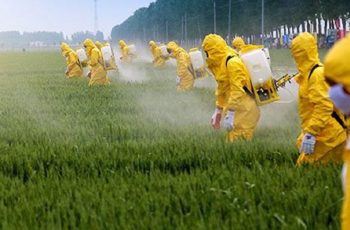Food allergies have become increasingly prevalent in recent years, and the rates of these allergies continue to rise. Understanding why food allergies are up is essential in managing and preventing this growing health concern.
Since the 1950s, there has been a significant increase in the prevalence of food allergies. However, this surge cannot be attributed solely to genetic factors. There are various hypotheses and potential factors that contribute to the rise in food allergies, including environmental influences and the modern lifestyle.
Researchers are exploring the impact of environmental factors such as diet changes, exposure to allergens, and the overall composition of our surroundings. These factors interact with genetic predispositions, triggering allergic responses in individuals.
While the reasons behind the increase in food allergies are not fully understood, the rise in prevalence is a cause for concern. It imposes a significant burden on public health and the healthcare system, with billions of dollars spent annually on managing food allergies.
Why Food Allergies Are Up
- The prevalence of food allergies has been steadily increasing since the 1950s.
- Genetic factors alone cannot explain the surge in food allergies; environmental factors and the modern lifestyle also play a significant role.
- Allergies to peanuts, tree nuts, shellfish, milk, and eggs are the most common.
- Food allergies have a distinct geographic variation, influenced by consumption patterns and exposure to specific food allergens.
- Current treatments for food allergies have limitations, and research is ongoing to develop new therapies and management approaches.
The Prevalence of Food Allergies
The prevalence of food allergies has been steadily increasing, especially in developed countries such as the United States and Europe. Studies have shown that the prevalence of food allergies ranges from 1-5% in these regions. In particular, allergies to peanuts, tree nuts, shellfish, milk, and eggs are the most common. The increase in food allergy rates has led to a significant burden on public health and the healthcare system, with billions of dollars spent annually on managing food allergies.
Factors Contributing to the Rise in Food Allergies
The increase in food allergies cannot be solely attributed to genetic factors. While there is a genetic predisposition to developing allergies, environmental factors also play a significant role. The modern lifestyle, changes in diet, exposure to allergens, and the overall composition of the environment are all potential contributors to the rise in food allergies.
Genetic predisposition means that certain individuals may have genetic variations that make them more susceptible to developing allergies. These variations can affect how their immune system responds to allergens, leading to allergic reactions when certain foods are consumed.
However, genetic predisposition alone does not account for the increase in food allergies. There are various environmental factors that interact with genetic susceptibility to trigger allergic responses in individuals.
The modern lifestyle, characterized by changes in diet and increased exposure to processed foods, has been suggested as a possible factor in the rise of food allergies. The shift towards consuming more processed foods and fewer fresh, whole foods may alter the immune system’s response to allergens.
Exposure to allergens, both in the environment and through food intake, is another crucial factor. Being exposed to allergens at an early age may play a role in the development of allergies. Additionally, the composition of the environment, including pollution levels and exposure to chemicals, can influence the immune system’s response to allergens.
It is important to note that the exact mechanisms by which these environmental factors contribute to the rise in food allergies are still being investigated. Researchers are studying the interplay between genetic predisposition and environmental factors to gain a better understanding of how and why food allergies develop.
Genetic Predisposition and Environmental Factors: A Complex Interaction
The relationship between genetic predisposition to food allergies and environmental factors is complex. While genetic variations increase the likelihood of developing allergies, it is the interaction between these variations and environmental influences that ultimately determines whether an individual will develop a food allergy.
The understanding of these genetic and environmental factors can help inform strategies for managing and preventing food allergies. By identifying individuals who are genetically predisposed to food allergies and understanding the environmental triggers, healthcare professionals can provide personalized recommendations and interventions to reduce the risk of developing allergies.

The Role of Food Antigens
Certain food antigens possess intrinsic immunogenicity, meaning they have the ability to stimulate an immune response. This immune response can lead to food allergies in susceptible individuals. Some food allergens, such as peanuts and tree nuts, have been found to be more likely to cause severe allergic reactions, including anaphylaxis.
Molecular modifications in these allergens, such as glycosylation and advanced glycation end (AGE) products, can alter their immunogenicity. For example, these modifications can affect the way allergens interact with immune cells, increasing the likelihood of an immune response.
However, it is important to note that the intrinsic immunogenicity of food antigens alone cannot fully explain the surge in food allergies. Other factors, such as genetic predisposition and environmental influences, also play a significant role in the development of food allergies.
Geographical Variation in Food Allergies
Food allergies are not evenly distributed around the world. Geographical variation in food allergies suggests that consumption patterns and exposure to specific food allergens play a role in their development. Different regions have different prevalent food allergies based on the foods that are commonly consumed.
For example, in countries where shrimp is extensively consumed, such as Thailand, allergies to shrimp are more common. Similarly, regions where legumes are commonly consumed, like India, tend to have a higher prevalence of legume allergies. This indicates that the availability and consumption of certain foods contribute to the development of allergies.
Understanding these geographical variations in food allergies can help us better understand the complex relationship between consumption patterns, exposure to allergens, and the development of allergies. By identifying the specific foods that are more likely to trigger allergic reactions in specific regions, we can improve preventive measures and develop targeted strategies for managing food allergies.

Factors contributing to Geographical Variation
- Dietary habits and cultural food preferences
- Exposure to local environmental allergens
- Availability and consumption of specific food allergens
- Genetic predisposition within specific populations
Recognizing the influence of geographical variation on food allergies highlights the importance of considering regional factors when addressing and managing this widespread health concern.
The Role of Adjuvants in Food Allergies
Adjuvants, both intrinsic and extrinsic to food antigens, are essential components in generating an immune response that triggers food allergies. In the context of food allergies, adjuvants that predominantly skew towards type-II immunity come into play. While the characteristics and mechanisms of action of these adjuvants are complex and not fully understood, researchers have identified certain adjuvants, such as cholera toxin (CTx) and other bacterial toxins, that induce type-II immunity.
However, the relationship between adjuvants and food allergens is still an area of intense investigation. Scientists are working diligently to uncover the intricate connection between adjuvants and the immunogenicity of food. By understanding how adjuvants interact with food antigens, we can gain valuable insights into the processes that trigger and sustain food allergies.
The Limitations of Current Treatments
Current treatments for food allergies, such as oral immunotherapy, have their limitations. While oral immunotherapy can help desensitize patients to specific allergens, it should be noted that it does not provide a cure for food allergies. Therefore, patients must still exercise caution and avoid allergens, as well as carry emergency medication like epinephrine.
One commercially available oral immunotherapy product, Palforzia, has faced challenges and limited success in its implementation. This is primarily due to the risks associated with adverse effects and the time-consuming nature of the treatment process.
However, researchers and medical professionals are continuously exploring new approaches to overcome these limitations and provide more effective treatments for food allergies. One promising avenue of investigation involves the development of IgG antibodies and novel therapeutics. These innovative approaches aim to target and modulate the immune response, offering new possibilities for managing and potentially preventing food allergies.
- While oral immunotherapy can help desensitize patients, it does not cure food allergies.
- Patients still need to avoid allergens and carry emergency medication.
- Palforzia, a commercially available oral immunotherapy product, has faced challenges and limited success.
- New approaches, such as the development of IgG antibodies and novel therapeutics, are being explored to overcome these limitations.
Conclusion
The rising prevalence of food allergies is a significant concern, impacting individuals and public health around the world. While the exact reasons for this surge are still not fully understood, it is clear that a combination of genetic predisposition, environmental factors, and changes in the modern lifestyle are contributing to the increase. Managing food allergies is a complex task, as current treatments have limitations and do not provide a cure.
However, there is hope on the horizon. Ongoing research is focused on developing new and more effective treatments for food allergies. Personalized therapies tailored to each individual’s specific allergens and immune response are being explored, showing promise in improving management strategies. Additionally, the development of allergy blockers and innovative approaches, such as the use of IgG antibodies, may provide breakthroughs in preventing allergic reactions.
The key to managing food allergies lies in a multi-faceted approach that includes educating individuals and families about allergen avoidance, carrying emergency medication like epinephrine, and seeking medical guidance for proper diagnosis and management. With continued research and advancements in treatment options, we are moving closer to a future where individuals with food allergies can live their lives with reduced fear and improved quality of life.




